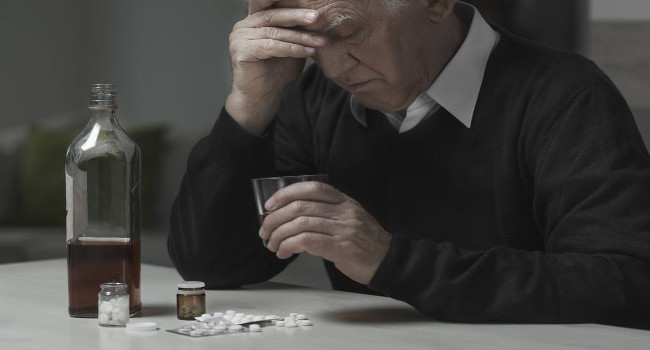Xanax Withdrawal – There is little doubt that Xanax has its uses, there is also little doubt that it can become highly addictive. For those who feel they are now dependent upon the drug, or those nearing this state, Xanax withdrawal must be considered.
We will take a look at the drug itself, why it is so potentially addictive and steps to be considered when going down the withdrawal route.
What is Xanax?
Its generic name is Alprazolam and it is known as a benzodiazepine which means it is a member of the tranquilizer family.
Who needs it?
Xanax is used to treat adults who suffer from panic attacks, anxiety disorders and those with related psychiatric disorders.
How does it work?
In works on a chemical messenger in the brain known as GABA and helps to increase its action by rebalancing your brain chemistry.
So what is the problem?
From the above, evidence from the medical community and first-hand user experience we can see that Xanax helps those with anxiety disorders, and does so effectively.
The problem is that long term use of the drug comes with some serious issues. Three of these are:
- Those using Xanax often find that they need to increase their dosage over time to achieve the same calming effects.
- This drug is ‘famous’ for the dependence and addiction issues it can cause.
- In terms of Xanax withdrawal, if a person ceases use abruptly there is a strong chance they will experience severe withdrawal symptoms. This is due to the way your brain chemistry goes through the process of rebalancing itself.
In certain cases such symptoms can be life-threatening, and unsupervised withdrawal from Xanax has caused death.
Fear:
The thought of having to stop using something you have become dependent on, and in many cases are addicted to is frightening.
Indeed experts have established that fear is the main reason addicts delay or deny withdrawal to any substance they are addicted to.
While this fear is understandable, it should be clearly understood that with expert professional help these fears can be explained and managed, and that you can overcome your dependence.
Self-withdrawal – Not worth the risk
It should be made very clear that there is no need or benefit for a Xanax user trying to withdraw on their own.
At best such an approach will simply compound withdrawal symptoms and make them unbearable. In all likelihood such a situation will lead to a continuation of the drug’s use and a longer addiction while at worst it could result in death!
Two sensible withdrawal options:
Due to the addictive qualities of Xanax and potential problems posed during withdrawal it is strongly advised that the addict seeks professional help during this process. Here are 2 options to consider:
Option 1 – Tapering
The first option for Xanax withdrawal we will look at is under the supervision of your doctor and is known as ‘Tapering’.
Tapering means gradually reducing the dose of Xanax by an amount, and over a certain period of time that will be determined by your doctor.
This gradual reduction and the time it takes very much depends on each individual. There is no ‘one fits all’ scenario for this withdrawal process.
While you are going through this process it is very important you visit your doctor on a regular basis, you report any unusual feelings or signs to them immediately, you try and eat as healthy a diet as possible and you avoid any other drugs use.
This tapering process is a gradual one and will take time, but it is very important to stay as positive as possible, be as patient as possible and let the process take as long as it must.
Option 2 – Rehabilitation Centre:
This option is felt by many to be the best route to take and is highly recommended for several reasons.
You will leave your normal environment and the pressures this brings with it. Such establishments offer first class treatment, support and encouragement in an environment that has been established for one purpose.
This purpose is to give you the best chance possible to beat your addiction and begin to live a normal, healthy life.
The friendly, professional staff have extensive prior experience and success in terms of treating addiction. In terms of Xanax withdrawal it is particularly important that you feel at ease during what can be a very testing period of your life.
Some of the best centres are actually known as Rehab Resorts and they have been established in an idyllic setting that will relax you and add to your strength of purpose.
Medically you will receive expert and supervised attention. In many cases the 12-step program may be used. This was originally established by Alcoholics Anonymous over 75 years ago and has been modified over time. The program has been extremely beneficial to those addicted to any substance.
Your rehabilitation program will be designed specifically for YOU. No individual is the same, this is clearly recognized by the staff and the treatment, methods and procedures of such a withdrawal program will be designed specifically with your needs in mind.
You will be in an environment that encourages you to talk about your experiences, fears and ambitions, and you will share and listen to others in a similar position. You will also be encouraged to set targets and goals, and just as importantly how to deal with any setbacks on your road to recovery.
Aftercare:
This is an absolutely vital part of your healing process. The best Rehab Resorts will offer extensive aftercare options as part of your Xanax withdrawal program. Such aftercare will be based on whatever is more convenient to you.
They will allocate a personal counsellor and offer a variety of options for aftercare. These can include identifying and interfacing with a certified therapist close to your home who will be responsible for your aftercare while regularly updating your Rehab counsellor.
If you live in a remote area they can offer support with certified therapists via telephone and internet, or you may feel more comfortable keeping direct contact with your Rehab counsellor via Skype.
Whichever option you go for there should also be an offer to re-visit the centre for progress checks and encouragement therapy as you require.
The flexibility of aftercare options offered is something you should look closely at before deciding which Rehab Resort is right for you.
Xanax withdrawal can be achieved, it must be achieved, and YOU can do it:
If you are currently addicted to Xanax please do not think you are alone, and please do not think withdrawal is something which cannot be achieved. Professional caring help is out there and you will be welcomed with open arms.
Just as importantly, this treatment, encouragement and support will not only be for the here and now, it will include vital aftercare and support that will give you every chance of leading a happy, healthy and normal life.

















